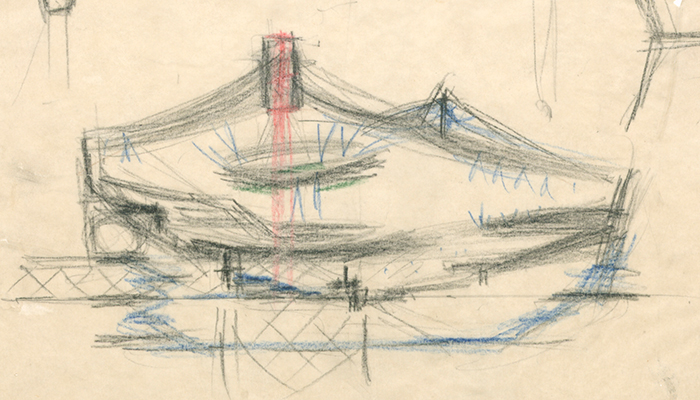
Concept sketch of the Philharmonie (detail), Hans Scharoun, ca. 1956. Akademie der Künste, Hans-Scharoun-Archiv, no. 2692, WV 222. Courtesy of Akademie der Künste, Berlin. © 2017 Artists Rights Society (ARS), New York / VG Bild-Kunst, Bonn
Choreography of the City: Hans Scharoun's Philharmonie as a Landscape of the Mind
GETTY CENTER
Museum Lecture Hall
This is a past event
Despite striking differences, Los Angeles and Berlin have many commonalities. Both have large, diverse populations and share a public perception that has been shaped by music and film. The most unexpected connection between them resides in two buildings for music performances—the Berlin Philharmonic (Berliner Philharmonie) (1963) and Walt Disney Concert Hall in Los Angeles (2003). The key to this affinity is the architect Hans Scharoun (1893–1972), whose Philharmonie reinvented architecture from three archaic forms: the mountain, the cave, and the tent.
In this lecture, Kurt W. Forster discusses how the Philharmonie reconfigures the very notion of a concert hall.
Kurt W. Forster is a professor of history of architecture at the Yale School of Architecture. In 1984, he became the founding director of the Getty Center's History of Art and the Humanities, now the Getty Research Institute.
This lecture complements the exhibition Berlin/Los Angeles: Space for Music, on view at the Getty Research Institute from April 25 to July 30, 2017.